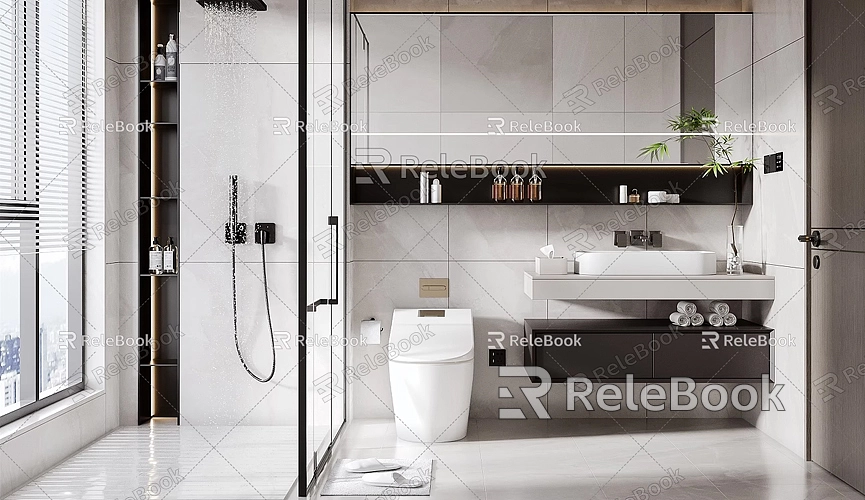How to Resize Model in SketchUp
Resizing a model is a crucial skill in 3D modeling. Whether designing buildings, interior spaces, or other types of 3D models, appropriate dimensions ensure realism and usability, affecting the overall aesthetic and functionality of the design. In this article, we’ll explore effective methods for resizing models in SketchUp, along with practical tips and considerations.
First, understanding the basic operations of SketchUp is essential for resizing. The interface is user-friendly, with various functions available in the toolbar. Before adjusting the size of a model, ensure that you select the object you want to resize. Use the “Select” tool to click on any part of the model, allowing you to select the entire model or a portion of it. It's important to choose the right range to avoid confusion during subsequent operations.

Next, let’s use the “Scale” tool, one of the most common methods for resizing in SketchUp. Click the “Scale” icon in the toolbar or use the shortcut key “S.” Once selected, your cursor will change to an arrowed icon. You can click and drag the edges or corners of the model to increase or decrease its size. Be mindful of the proportions while dragging to ensure that the overall scale of the model remains intact.
When scaling a model, you may need to maintain specific proportional relationships. You can hold the Shift key to keep the original proportions while resizing. This is particularly important for architectural models or furniture designs that require precise dimensions. On the other hand, if you need to perform non-uniform scaling, you can adjust freely without holding the Shift key.
Additionally, SketchUp offers a “Tape Measure” tool for more precise adjustments. With the measurement tool, you can determine the specific size of a part of the model, then resize accordingly. For instance, when designing interior spaces, you might need to adjust the room size based on actual furniture dimensions to ensure coordination and comfort among all elements.
Sometimes, while resizing, you may find certain elements don’t fit the new scale. You can use the “Move” tool to rearrange different parts of the model. Select the “Move” tool, click, and drag the parts that need repositioning, while keeping an eye on the relationships between surrounding elements to ensure overall harmony and functionality.
After resizing, it’s advisable to conduct a thorough check. Ensure all parts of the model meet the expected dimensions while considering the model’s applicability in the real world. If you are designing for a building project, it’s best to compare with actual dimensions to confirm feasibility. Measuring on-site can help ensure that all aspects of the design can be successfully implemented in a real environment.

Choosing textures is another important aspect not to overlook. High-quality textures not only enhance the model's appearance but also maintain visual integrity during scaling. If you need high-quality 3D textures and HDRI while creating models and virtual scenes, you can download them for free from [Relebook](https://textures.relebook.com/), which offers a wealth of resources suitable for various design needs, helping to enhance your model’s realism.
Furthermore, if you need exquisite 3D models, you can find them at [Relebook](https://3dmodels.relebook.com/), which provides a large selection of quality 3D resources. These high-quality materials can add vibrant details to your models and inspire your overall design.
While resizing, consider using groups and components. Dividing your model into multiple groups or components makes it easier to manage and adjust different parts. With groups and components, you can easily make localized adjustments without affecting the overall structure. This is particularly beneficial for complex design projects and can significantly improve workflow efficiency.
In conclusion, resizing a model requires attention and patience. By effectively utilizing SketchUp’s tools and features, you can accomplish this task with ease. Staying focused on proportions and dimensions is key to ensuring design success. With practice, you’ll find these techniques not only enhance your efficiency but also strengthen your design skills.
Resizing models in SketchUp isn’t a complicated task, but it does require mastering some techniques and methods. By selecting the right tools and employing measurement and movement functions, you can achieve precise size adjustments. Don’t forget to use high-quality textures and models to elevate your work quality. We hope this article helps you in your modeling process in SketchUp, making your designs even more impressive! If you need high-quality 3D textures and HDRI, download them for free from [Relebook](https://textures.relebook.com/). For beautiful 3D models, check out [Relebook](https://3dmodels.relebook.com/) for a wealth of quality resources.

